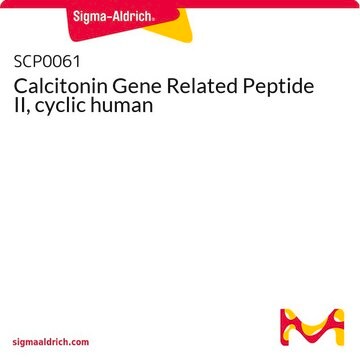WTA1
TransPlex® Whole Transcriptome Amplification Kit
DNA polymerase separate.
Synonyme(s) :
Transcriptome Amplification Kit
Se connecterpour consulter vos tarifs contractuels et ceux de votre entreprise/organisme
About This Item
Code UNSPSC :
41121800
Nomenclature NACRES :
NA.55
Produits recommandés
Niveau de qualité
Technique(s)
whole genome amplification: suitable
Conditions d'expédition
wet ice
Température de stockage
−20°C
Description générale
TransPlex®, a Whole Transcriptome Amplification (WTA) method, allows for representative amplification of nanogram quantities of total RNA in less than 4 hours without 3′-bias. Microgram quantities of amplification product generated from tissue, cultured cells, formalin-fixed samples, or serum are suitable for downstream applications such as qPCR and microarray analyses.
Application
Suitable for use with downstream applications including:
- qPCR
- microarray analysis
- cloning
TransPlex® Whole Transcriptome Amplification Kit has been used to synthesize double-stranded cDNA. It has also been used in the amplification of cDNA.
Caractéristiques et avantages
- Amplification of total RNA in less than 4 hours with less than 30 minutes of "hands-on" time
- Only 5 ng of starting material required to produce a highly representative library from total RNA
- Microgram quantities of amplification product generated from intact RNA from tissue, cultured cells, serum, or degraded RNA from formalin-fixed paraffin-embedded samples
Principe
The WTA process involves two steps. In the first step, sample RNA is reverse transcribed with non-self-complementary primers composed of a quasi-random 3′ end and a universal 5′ end. As polymerization proceeds, displaced single strands serve as new templates for primer annealing and extension. The resultant OmniPlex cDNA library, comprised of random, overlapping 100 - 1000 base fragments flanked by universal end sequence, is then amplified by PCR with the universal primer to produce WTA product.
Informations légales
TransPlex is a registered trademark of Rubicon Genomics, Inc.
Produit(s) apparenté(s)
Mention d'avertissement
Warning
Mentions de danger
Conseils de prudence
Classification des risques
Eye Irrit. 2
Code de la classe de stockage
10 - Combustible liquids
Point d'éclair (°F)
Not applicable
Point d'éclair (°C)
Not applicable
Faites votre choix parmi les versions les plus récentes :
Déjà en possession de ce produit ?
Retrouvez la documentation relative aux produits que vous avez récemment achetés dans la Bibliothèque de documents.
Munehiro Okamoto et al.
Scientific reports, 5, 8850-8850 (2015-03-07)
We discovered a lethal hemorrhagic syndrome arising from severe thrombocytopenia in Japanese macaques kept at the Primate Research Institute, Kyoto University. Extensive investigation identified that simian retrovirus type 4 (SRV-4) was the causative agent of the disease. SRV-4 had previously
Catarina Guimarães-Teixeira et al.
Journal of personalized medicine, 11(10) (2021-10-24)
(1) Background: Methylation of N6-adenosine (m6A) is the most abundant messenger RNA (mRNA) modification in eukaryotes. We assessed the expression profiles of m6A regulatory proteins in renal cell carcinoma (RCC) and their clinical relevance, namely, as potential biomarkers. (2) Methods:
Sa Xiao et al.
Virus research, 145(1), 80-91 (2009-06-23)
The complete genome sequence of avian paramyxovirus serotype 7 (APMV-7) prototype strain dove/Tennessee/4/75 was determined. The genome size is 15,480 nucleotides (nt) long and follows the "rule of six". The genome contains six non-overlapping genes in the order of 3'-N-P/V/W-M-F-HN-L-5'.
Anne H Rowley et al.
The Journal of infectious diseases, 203(7), 1021-1030 (2011-03-16)
Intracytoplasmic inclusion bodies (ICI) have been identified in ciliated bronchial epithelium of Kawasaki disease (KD) patients using a synthetic antibody derived from acute KD arterial IgA plasma cells; ICI may derive from the KD etiologic agent. Acute KD bronchial epithelium
Eszter Posfai et al.
Genes & development, 26(9), 920-932 (2012-04-14)
In mammals, totipotent embryos are formed by fusion of highly differentiated gametes. Acquisition of totipotency concurs with chromatin remodeling of parental genomes, changes in the maternal transcriptome and proteome, and zygotic genome activation (ZGA). The inefficiency of reprogramming somatic nuclei
Notre équipe de scientifiques dispose d'une expérience dans tous les secteurs de la recherche, notamment en sciences de la vie, science des matériaux, synthèse chimique, chromatographie, analyse et dans de nombreux autres domaines..
Contacter notre Service technique









